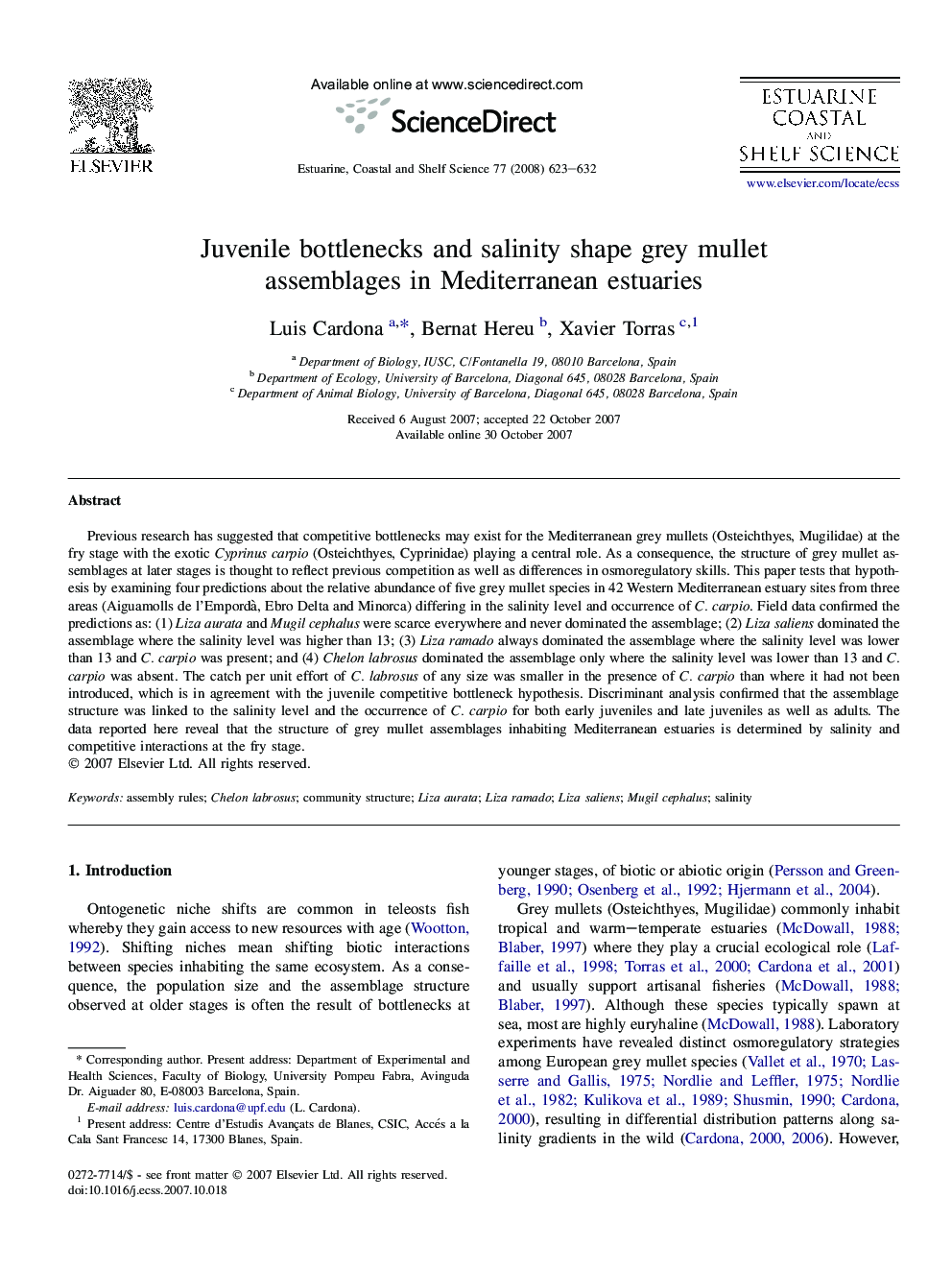| Article ID | Journal | Published Year | Pages | File Type |
|---|---|---|---|---|
| 4541521 | Estuarine, Coastal and Shelf Science | 2008 | 10 Pages |
Previous research has suggested that competitive bottlenecks may exist for the Mediterranean grey mullets (Osteichthyes, Mugilidae) at the fry stage with the exotic Cyprinus carpio (Osteichthyes, Cyprinidae) playing a central role. As a consequence, the structure of grey mullet assemblages at later stages is thought to reflect previous competition as well as differences in osmoregulatory skills. This paper tests that hypothesis by examining four predictions about the relative abundance of five grey mullet species in 42 Western Mediterranean estuary sites from three areas (Aiguamolls de l'Empordà, Ebro Delta and Minorca) differing in the salinity level and occurrence of C. carpio. Field data confirmed the predictions as: (1) Liza aurata and Mugil cephalus were scarce everywhere and never dominated the assemblage; (2) Liza saliens dominated the assemblage where the salinity level was higher than 13; (3) Liza ramado always dominated the assemblage where the salinity level was lower than 13 and C. carpio was present; and (4) Chelon labrosus dominated the assemblage only where the salinity level was lower than 13 and C. carpio was absent. The catch per unit effort of C. labrosus of any size was smaller in the presence of C. carpio than where it had not been introduced, which is in agreement with the juvenile competitive bottleneck hypothesis. Discriminant analysis confirmed that the assemblage structure was linked to the salinity level and the occurrence of C. carpio for both early juveniles and late juveniles as well as adults. The data reported here reveal that the structure of grey mullet assemblages inhabiting Mediterranean estuaries is determined by salinity and competitive interactions at the fry stage.
